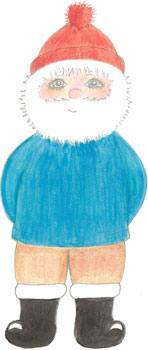
Salty Sam’s Fun Blog for Children
Number 506
Wolves
Hello Everyone

Are you going to have a Halloween party this year?
lf you are, l am sure you want it to be as spooky as possible.
And what could be more spooky, spine-chilling and blood-curdling than the distant howl of a wolf – or even worse maybe, the close howl of a wolf.
Bill and Bob told me after l had written a blog post about foxes earlier this year that l should write one about wolves. They said that if foxes were often the bad guys in fairy tales, then wolves were even worse!
l mean ask Red Riding Hood and the three little pigs for a start!
l said that they might see foxes around in the back gardens of their street but they were unlikely to see any wolves – unless they had escaped from the Rocky Bay Animal World zoo, because wolves don’t live in the wild around here anymore.
There have been people wanting to introduce them back into the wild, but there was a lot of opposition to that.
Wolves are dangerous to farm animals and domestic dogs and have been known to attack humans too, although this is rare nowadays. There have been stories throughout history of wolves attacking and eating humans, while they were travelling or even taken from villages.
Wolves can carry rabies and this is probably when they are at their most dangerous to humans in modern times. Bites from rabid wolves are many more times dangerous than rabid dogs.
The victims are bitten but not eaten.
Animals and people can die from rabies once symptoms appear. lt is a viral infection that attacks the brain and nervous system.
Wolves are still to be found in the wild in parts of Europe though.
Although wolves were often highly thought of in some Ancient Greek and Roman mythology, in parts of Europe nowadays there are many sinister (dark) legends about them. ln some rural communities, wolves are much feared and thought to have almost magical powers associated with them.
There are tales of werewolves in old folklore. A werewolf is a human that can become a wolf-like creature. A human can be turned into a werewolf by being bitten or scratched by another werewolf. The transformation will occur during a full moon.
This affliction is called lycanthropy.
Some people say werewolves are really a kind of demon that people see and nothing to do with wolves at all; they just have similar looks.
Lycanthropy is the stuff of superstition; but there is a rare medical condition called clinical lycanthropy where someone has the delusion (misplaced imaginings) that they have been transformed into an animal. Maybe they watched too many horror films and had a very suggestible and malfunctioning brain.
Clinical lycanthropy is a kind of psychosis which is when a brain that is ill has hallucinations (sees things that aren’t there).
The legends of werewolves may well have started as dark fairy tales inspired by rabies. Most cases of rabies in humans come from dog bites. Rabies causes angry and violent behaviour, even bright sunlight can spook a patient into a fit of violence.
An infected animal wants to attack another. lt will be driven to bite and this is what the virus wants in order to spread to another animal. You could be bitten by an infected dog or wolf but also a bat, raccoon or skunk too.
lf you are bitten by any wild animal, you should wash the bite immediately and seek medical attention. lf you can get injected by a vaccination before the rabies virus gets to your brain, your life can be saved. But you need to hurry.
People in Britain are not very aware of rabies because it is thought not to be in the animal population, but a few wild bats do carry it. ln other countries it can be found in many other animals.
Many, many thousands of people in the world every year die from rabies. lf you get the vaccination in time, you will have a 100% chance of living but if you don’t, the disease is 100% fatal.
Driven out by humans because of their threat to people and livestock, wolves tend to now only be found in wilderness areas. They can live in mountainous terrain or forests, grasslands, deserts or tundra (cold, treeless areas). The last wolf in Britain was killed in the late 1600s. Wolves were eradicated (wiped out) of France and Central Europe and most of Scandinavia over the last hundred years.
They still live in Asia, Russia, Finland, Eastern and Southern Europe.
A different type of wolf is to be found in North America. There, they survive cold winters by growing a magnificent, thick coat. They have specially adapted foot pads to cope with running across ice and snow so that they don’t get frostbite.
There are others in Africa and the Middle East.
Wolves are related to other canines like dogs, coyotes and jackals; but are bigger.
Wolves usually hunt in packs for prey that can be as large as deer, moose and even bison. They can eat fish, birds, eggs and fruit as well. They seem to grieve if a member of their pack dies and can care for another wolf that is infirm; but at the same time will eat each other if forced to in a harsh winter. They will also kill any other animal that fights with them over a kill which must add to their reputation of being merciless hunters.
They see bears and cougars as competition and enemies if they encounter them and will sometimes attack them.
Pups that grow up may leave their family in order to form a new pack and each pack is very territorial. That means they hunt in an area they think belongs to them and will fight off intruders, sometimes to the death. But if hunting is good, packs may work together to bring down prey. Lone wolves usually join up with a pack eventually.
A pack could be five or six members or up to maybe as large as about forty. Wolves are social but also hierarchical – alpha (top) dogs rule over other members of the pack.
Wolves are clever hunters. They tend to ambush rather than chase even though they can run at over 50 kph (30 mph). They often hunt at night.
The size of the territory, just like with foxes, grows to be bigger when food is more difficult to find. Wolves tend to spend a lot of their time pacing over their territory. They advertise the fact that they are around and occupying their territory by howling and also, like a lot of other animals, scent marking and scratch marking. They also howl to call on other members of the pack to come to them, but not to a full moon despite many pictures showing that they do!
Dens can be constructed by scratching out burrows in the earth but are usually sited in a natural hollow in rocks or thickets. Pups start to venture out of the den when they are three-weeks-old in the springtime. The cubs’ father brings food to the den. Wolves mate for life.
By the autumn, the pups are joining in with the hunting pack.
Wolves can track down their prey by following tracks in the snow or mud but their sense of smell is as good as that of a dog so they can track by detecting scent too.
Pairs of wolves can hunt just as successfully as a pack and are usually more successful; but there is always the chance that they can be killed when hunting big prey. Animals like bison are very strong, and deer are good at kicking out.
Humans actively hunt wolves in many regions. They can be shot, poisoned or hunted down by dogs especially bred for the purpose or trained hunting birds like eagles and falcons.
Some people keep wolves as exotic pets, but they don’t tend to be as docile and obedient as domesticated dogs.
Alsatian dogs probably look the most like their wolf ancestors.
lf you like my blog, please support it by telling all your friends and followers about it.
Thank you!
And see you again next Fun Friday!
Love and kisses
Salty Sam

www.christina-sinclair.com


Bill and Bob’s Joke of the Week![]()
![]()
Bob: A little boy comes home and says, “Mummy, mummy, the children at school keep saying l look like a werewolf!”
Bill: And she said?
Bob: “Don’t be silly and go and comb your face!”

Salty Sam © Christina Sinclair 2015
Unauthorized use and/or duplication of material from this blog without express and written permission from this blog’s author and owner is strictly prohibited.
Links may be used to www.christina-sinclair.com

Picture Gallery
 Wolves aren’t triggered to howl by a full moon
Wolves aren’t triggered to howl by a full moon
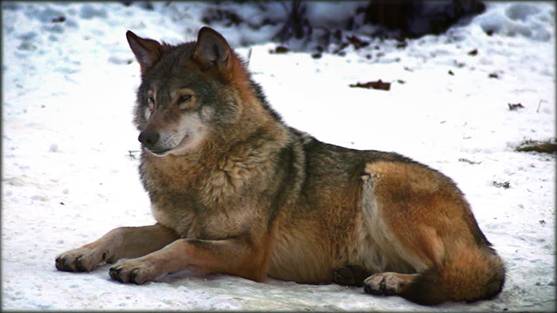 Eurasian wolf
Eurasian wolf
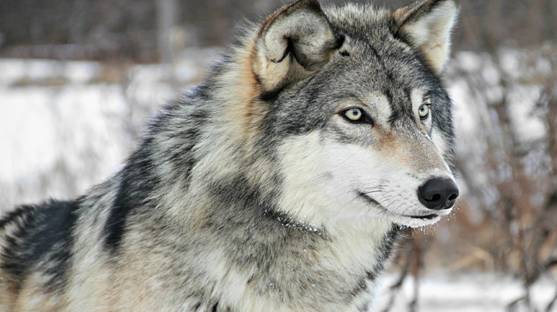 Grey wolf
Grey wolf
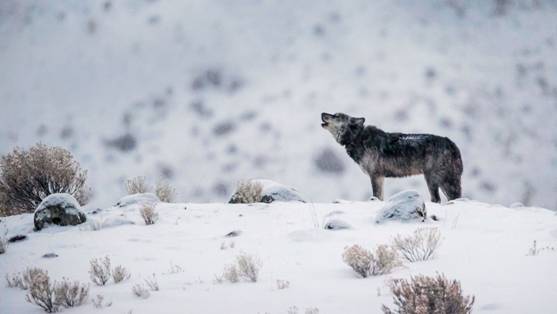 The grey wolf of North America
The grey wolf of North America
 A borzoi is a kind of dog used in wolf hunting
A borzoi is a kind of dog used in wolf hunting



 THE SALTY SAM NEWS DESK
THE SALTY SAM NEWS DESK

This week Bill and Bob learnt a new song.
They have been singing it everywhere they’ve gone – which amused the shoppers in the Rocky Bay Supermarket last night.

It is sung to the tune of Sing a Song of Sixpence.
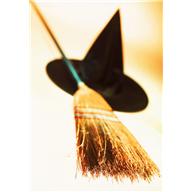
Happy Halloween to all of you!

The children wanted a Halloween party as usual and Bill and Bob’s mum made a few seasonal treats including a large cake.
She covered it in white icing and then piped three circles of black icing on it.
She pulled the icing out with a skewer to pull the lines into a web shape.
Then she piped lines onto the scrapes to complete the web shape.
It looked very effective.
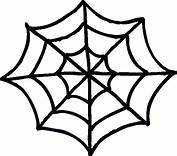
lf you want more Halloween party ideas, check out my Pin Board at:-
https://www.pinterest.co.uk/TheSaltySamBlog/festivals/


*********************
TO ADVERTISE ON THIS BLOG
PLEASE CONTACT:
christina.sinclair.ads@aol.co.uk
*********************

 Quick Quiz
Quick Quiz
lf you want to dress up as a witch this Halloween, you will need a witch kit.
Can you work out these words are? They form a witch kit.
- w _ _ _ _ h _ _
- m _ _ _ _ w _ _ _
- s _ _ _ _ b _ _ _
- b _ _ _ _ c _ _
- c _ _ _ _ _ _ _
- b _ _ _ _
- c _ _ _ _
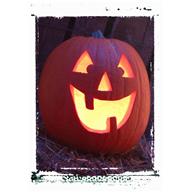



lt’s the Weekend!

HOW TO MAKE A SNOWFLAKE BAUBLE
Here is another project for you to make for the forthcoming holidays.
You could make this bauble in red or dark green to let the white snowflake design stand out.
Remember that a snowflake always has six arms.
You could decorate the top with beads and put a bell on the bottom as well if you would like to.

Not really suitable for outdoor trees
BAUBLE PANEL (KNIT SIX)
Using 4mm knitting needles and dk yarn cast on 11 stitches
Knit 13 rows of stocking stitch
Cast off
TO MAKE UP
- Embroider a snowflake pattern onto four of the panels using Swiss darning stitches
- Sew these panels together in a horizontal line using over-sew stitching with right sides together
- Then sew up the fourth seam
- Sew a loop into the centre of a plain panel and sew onto the top of the bauble
- Sew on the bottom panel but as you get half way along the fourth side turn the bauble the right way out and stuff with plenty of stuffing so that your cube becomes a sphere
- Then sew up the small gap
SNOWFLAKE PATTERN
– – V – –
V – – – V
– V – V –
– – V – –
– V – V –
V – – – V
– – V – –

Please note that the material on this blog is for personal use and for use in classrooms only.
It is a copyright infringement and, therefore, illegal under international law to sell items made with these patterns.
Use of the toys and projects is at your own risk.
©Christina Sinclair Designs 2015


Quick Quiz Answers
- witch hat
- magic wand
- spell book
- black cat
- cauldron
- besom
- cloak




